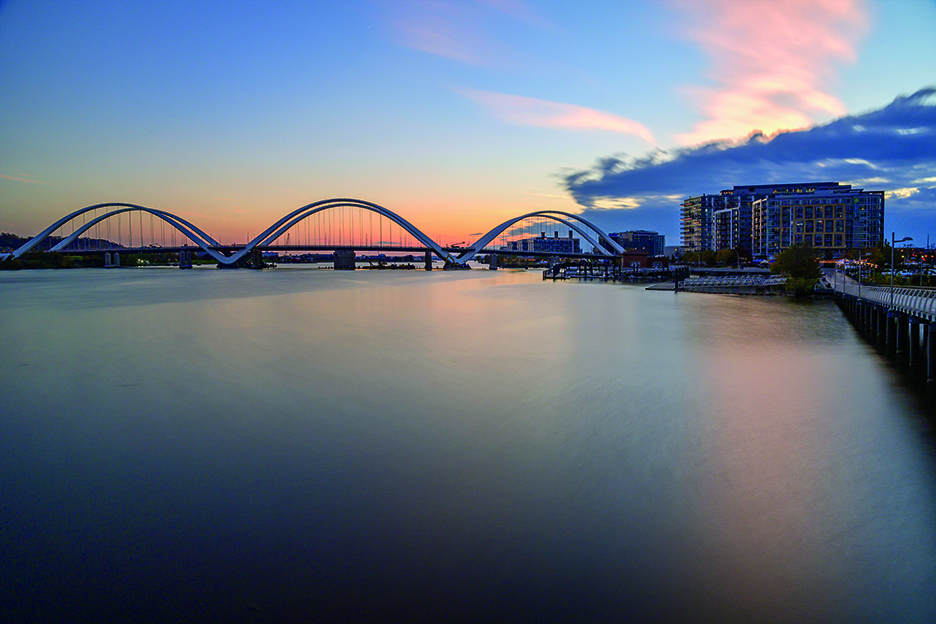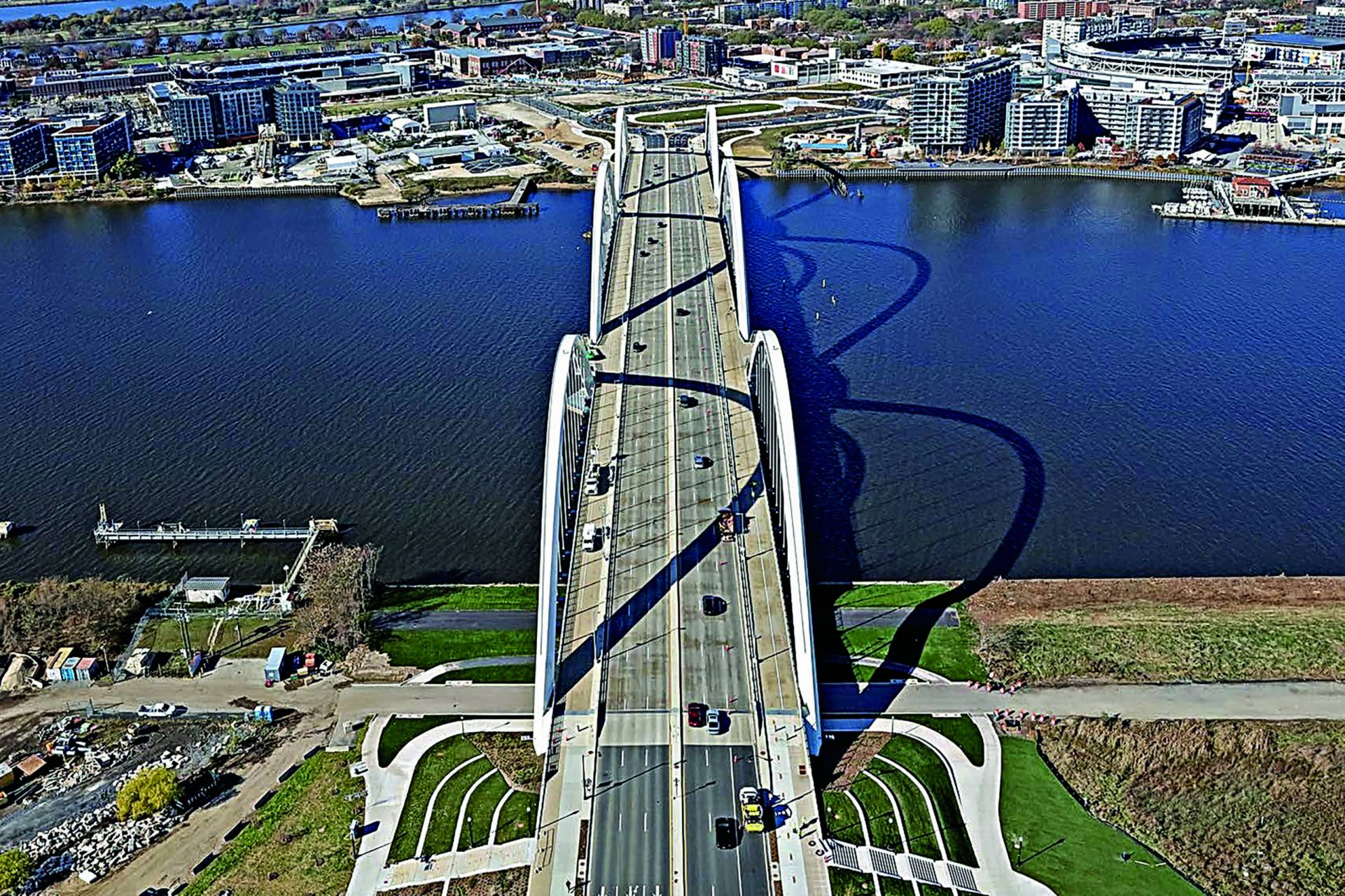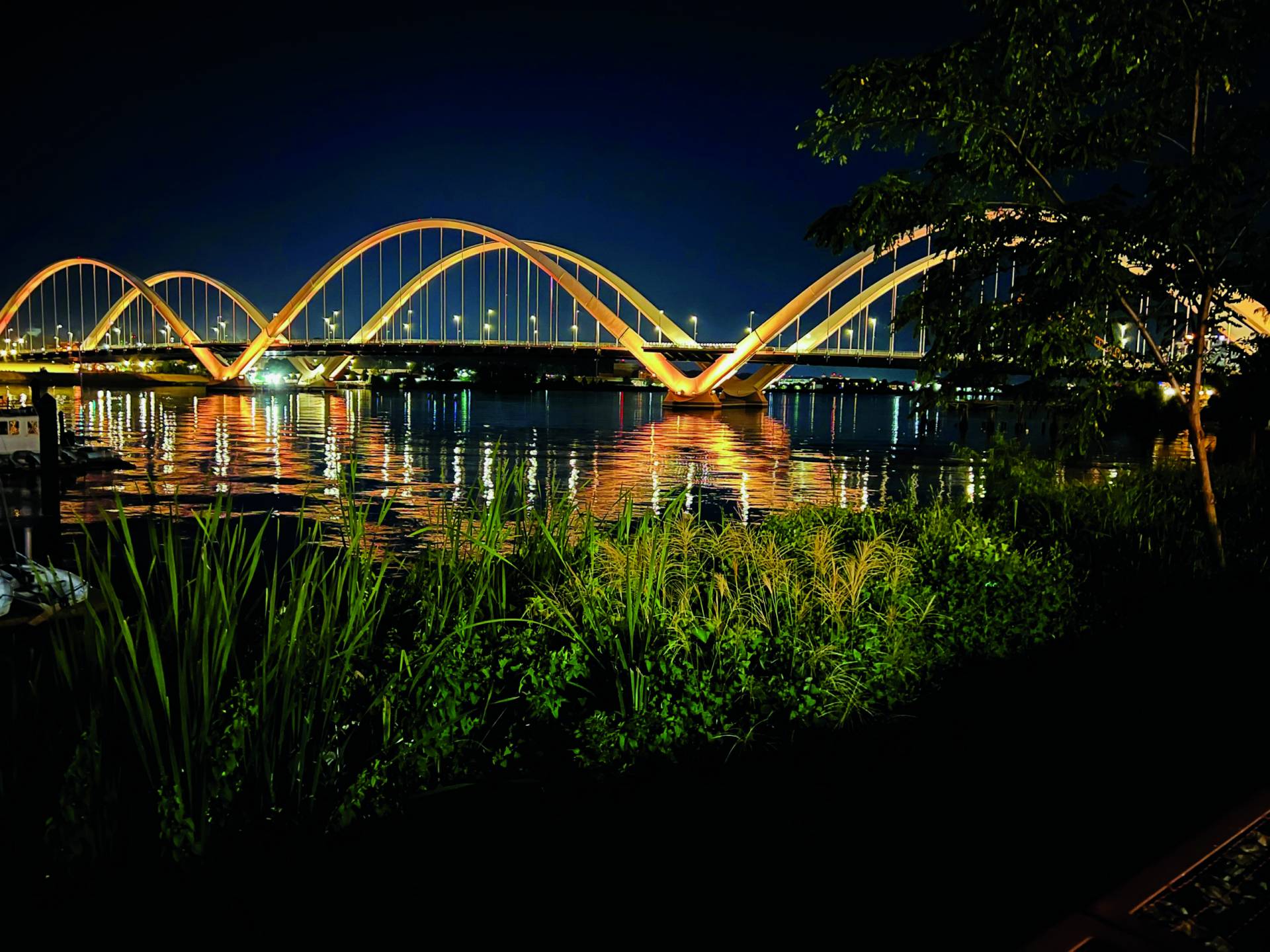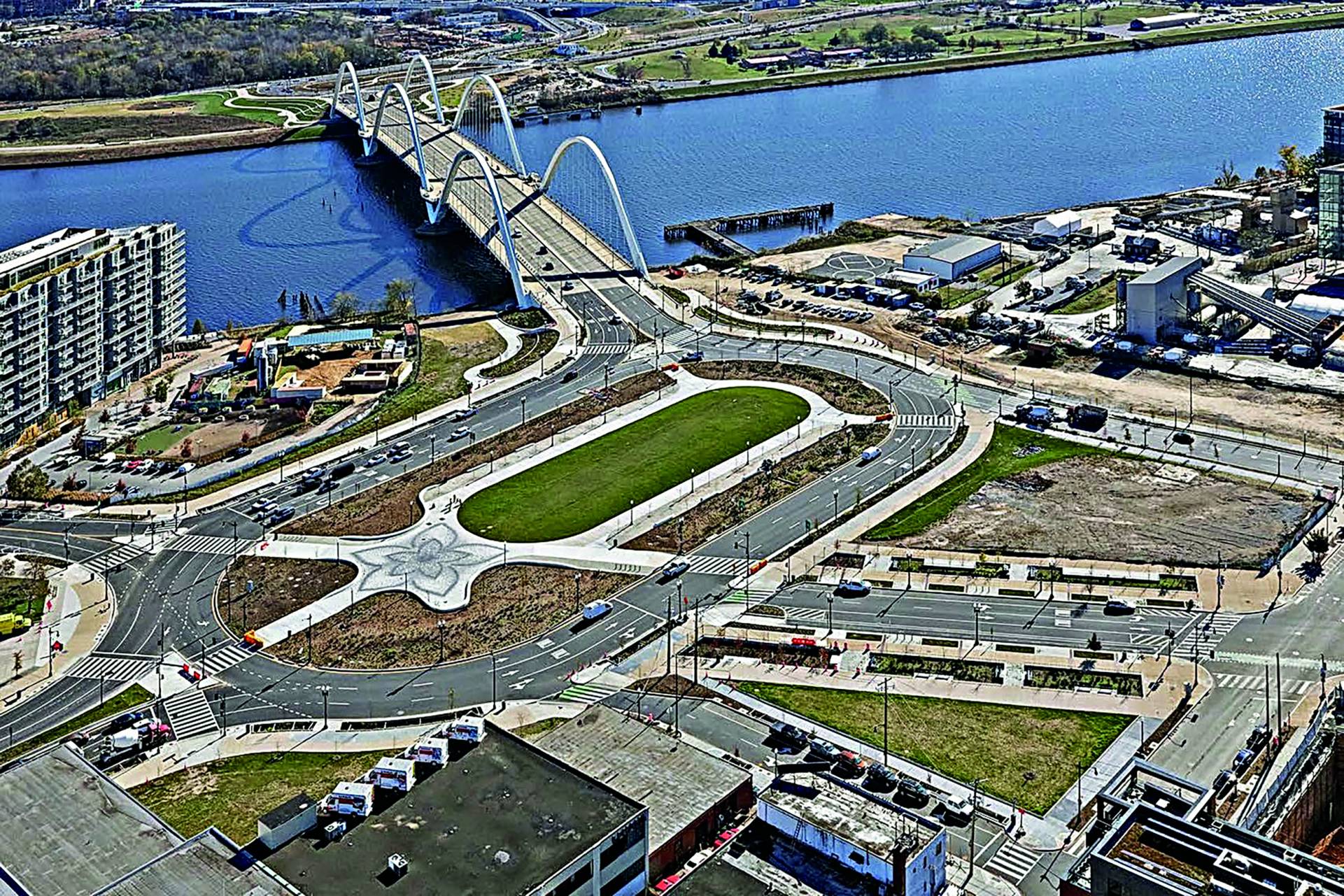
Frederick Douglass Memorial Bridge overcomes obstacles and spans an economic divide
DESIGNER
2023
The new Frederick Douglass Memorial Bridge in Washington D.C., crosses more than just the Anacostia River. The largest infrastructure investment in District Department of Transportation history, the project not only replaced the functionally obsolete 68-year-old bridge, it reconstructed the Suitland Parkway/I-295 interchange.
The new structure improves pedestrian and vehicular safety, enhances multimodal transportation options, increases community accessibility and supports economic development on both sides of the river. In many ways, revitalization is the overriding goal, particularly for the historically underserved community around it.
DDOT wanted a bridge that directly addresses the inequities in transportation policy, planning and project delivery in Washington, D.C. The idea was for the project to provide economic fuel to the region. And it seems to be working, as investments and development are already on the rise.
“It’s our responsibility to find ways of incorporating or carrying out that vision statement through our projects,” says Dennis Howland, program manager for the South Capitol Street Corridor Program, a mega infrastructure project that includes the construction of the new Frederick Douglass Memorial Bridge.
“We want to make sure our projects are mindful of the external environment,” he says, "so we wanted to ensure that pedestrians and cyclists people can access mass transit.” The bridge was designed with six lanes of traffic in each direction along with 18-foot split use paths for bicyclists and pedestrians.
HNTB joined the team in August 2017 as program and construction manager to provide project oversight. Much of the HNTB team also worked on another DDOT mega project — the 11th Street Bridge replacement and widening — where its recommendations resulted in cost savings and a significantly reduced schedule.
“HNTB was a major part of the success at 11th Street, and we certainly reaped the benefit of having them again,” Howland says. “Their knowledge and experience was essential for us on a project of this magnitude.”
The firm was instrumental in overseeing the design process and ensuring that the Frederick Douglass Memorial Bridge was constructed according to technical requirements, visual quality requirements and specifications.
“Ultimately, we’re replacing the existing bridge with a new signature structure, as well as constructing traffic ovals at each end of the bridge for the purpose of calming traffic and to provide connections to numerous intersecting roadways,” said Jon Whitney, HNTB program manager. “The center of the ovals created public spaces for the local communities on each side of the river. On the east side of the river, we also reconstructed a portion of I-295, including bridges over three roadways and a new interchange between I-295 and Suitland Parkway.”
It was a much-needed investment. The existing interstate didn’t meet current design standards, and the bridges were structurally deficient.
Working together
Co-location was critical in the beginning. The collaborative atmosphere that sprang from the project’s early days proved vital, as numerous changes would ultimately need to be incorporated into the design.
The in-person meetings morphed into Zoom and Microsoft Teams meetings when the pandemic hit. “Co-locating was still going on. It just moved to our desktops,” Howland added.
“We brought everyone to the table to make changes happen quickly and efficiently, and it involved a lot of give and take,” Navin Jain, HNTB deputy program manager and contract manager.
When the pandemic hit, the collaborative approach proved beneficial once again, as the team quickly pivoted to take advantage of lighter traffic and implemented extended lane closures to expedite construction.
“Many of the work restrictions were lifted,” Whitney says, “so that helped the design-builder significantly advance the project during the lockdown.”
And when supply chain issues threatened to drag the project mid-way through the schedule – like many construction projects, HNTB took a hands-on approach by directly coordinating the DDOT approval process for long-lead items to ensure timely deliveries.
“We proactively worked with the contractor to help them expedite that process,” Jain says.
When utility relocations threatened to significantly impact the schedule, the team came together to re-sequence the project to keep it moving. And when one of the bridge's iconic arches was ¾-inch out of tolerance, with five segments already in place, everyone came together to work a solution.
“Everyone pitched in, left their egos at the door and made the best decisions,” Howland says.



A purposeful approach
A stakeholder communications committee comprised of at least 25 community representatives, was created to address any potential community-related issues while working across such a heavily populated area of the city – there are major league baseball and soccer stadiums, a military facility and residential areas in close proximity to the job site.
The group met quarterly in the project office, during which HNTB would provide updates and receive feedback regarding issues and concerns. In the process, committee members would frequently become advocates for the project.
The committee’s impact on the project was undeniably far reaching.
“They brought some great ideas to the table,” Whitney said. “For instance, there’s some very intricate landscaping and hardscaping in these large open spaces within the ovals on either side of the bridge, and they wanted to know who was going to maintain those areas.”
While it wasn’t part of the original contract, the team found a way to include an irrigation system in the contract through negotiations between the design-builder and DDOT.
They also incorporated a butterfly garden at the committee’s request.
“In the end, the stakeholder communications committee provided a great way for them to feel connected to the project. It was a great way to engage the stakeholders, and it produced some very real benefits,” Whitney said.
Innovative workforce training programs provide opportunities
There is a growing disconnect between the rising number of available construction jobs and the skillsets of the populace. It’s a particular concern in economically underserved areas. Anticipating and understanding that need, the District Department of Transportation invested in three workforce development programs during the Frederick Douglass Memorial Bridge project:
- Construction Management Training Program (CMTP): A field service and classroom curriculum that provides accelerated instruction and opportunities for District residents with little to no experience in high demand jobs to earn certifications and increase chances of employment in construction management.
- STRIVE Program: A six-week, hands-on mentoring program that exposed District high school students with a proven affinity for STEM education to key discipline areas in heavy civil engineering.
- Jobenomics DC: A 10-week, grassroots program focused on basic job skills and heavy civil training to connect residents in the most impoverished communities in the District of Columbia to construction jobs and startup businesses.
SEE MORE ARTICLES
MORE DESIGNER STORIES
ALLEGIANT STADIUM
CASEY ARBORWAY
CHAMP CLARK BRIDGE
ORLANDO INTERNATIONAL AIRPORT, SOUTH TERMINAL
US 290 Program
